How to Eliminate Prospect Resistance in your Consulting Sales Conversion Process
Interesting fact - your client universe is like an iceberg.
At the visible tip of your client iceberg are the customers who took the leap and signed up for your consulting services.
What lies beneath the iceberg are the prospects who turned you down, or those who experienced so much resistance early in your conversion process that they never even popped up on your 'lead generation radar'.
If you spend a few minutes with new clients to discover these moments of friction, you'll find a bounty of ideas to make small tweaks that dramatically increase the impact of your sales and marketing performance.
In this article, I'll share some personal experiences of conversion resistance in action, and some simple steps you can take to overcome it.
'Some of your testimonials nearly put me off buying your training program’
This week, I've been coaching several clients through the crucial stages of building their consultancy sales page.
Whilst walking a client through this exercise, I brought up one of the sales pages on myDataBrand (my coaching/training business for data consultancies) as an example of what sections to include.
At this point, my client confided that they had studied this sales page before committing to the program and everything had looked fine until they studied a couple of the testimonials more closely.
I had gathered a couple of the testimonials a few years ago, but because they fitted the layout and messaging I was looking for I included them and didn't think anything of it.
Here's where it gets interesting…
My client had studied each testimonial, looking at some of the recent content published by the two consultants featured in the testimonials.
One of the consultants had since taken on a CDO role, and the other is the CEO of a large consultancy, which meant both of these consultants no longer create content consistently.
In each case, they have no need.
But the fact that these consultants were no longer applying what they had learned from my coaching acted as a point of resistance for my prospective client
It had been enough to question their decision to join the lead generation program for data consultancies that I run. Despite this, the client had still signed up, but it clearly could have gone the other way.
And once I realised this, I made a mental reminder to urgently swap out those testimonials for some more recent ones where my consulting clients are putting out regular content.
Because if this client was confused, then chances are it's the tip of the iceberg - who else could be finding resistance in the sales conversion process that I wasn’t even aware of?
Chances are, you’ve got a bunch of these ‘resistance events’ in your sales process that are hampering your own prospect conversion performance.
So let’s put a plan in place to stamp them out…
The Danger in Asking the Right Question of the Wrong Contact
Now, you may be thinking:
Why don't I just ask all those prospects who didn't buy from me what was a turn-off for them in the conversion process?
And that would seem logical, right?
However, it’s not always the best approach because not everyone who engaged in your sales process is an 'Ideal Client Profile (ICP)'.
Note: An ICP is those 5-star customers that are excellent for your business because they happily pay for the premium work you love delivering, get the best results, and give you the least headaches.
Yes, you'll get some nuggets of wisdom from talking to prospective clients who faded away during the sales process (or flat out rejected you), but I believe the best place to start is by surveying those customers who paid you their hard-earned cash (or had ready-access to a budget for data consulting!)
Why?
Because you want more people like them - real customers, with real problems, and big enough budgets for the work you love to deliver.
One painful truth is that during my time as a data consultancy founder and principal (providing data quality/data migration consulting and tools mostly) I now realise that a substantial percentage of the ‘prospects' I spoke to were simply fishing for ideas and had zero intention of hiring my firm.
Do you run a data or IT consultancy? In that case, you'll have experienced the same thing, I'm sure.
For example, one cunning procurement technique is to invite additional data and IT consultancies into a bidding war with the sole purpose to get the best price from a supplier the client had wanted all along!
The crafty swine.
🤬
Side note: Incidentally, I coach a lot of clients to be wary of these 'vendor beauty parades' by using different tactics such as using onboarding questionnaires to vet prospective clients' suitability, or in most cases running a mile from RFP processes!
So, the point here is that not every prospect that falls below the watermark of your 'client iceberg' is going to give you reliable advice.
Some of these prospects were never going to be a client, so if you ask them about their ideas around resistance or areas of improvement, they'll end up giving you lame advice such as:
"Your logo looks a little bit cheap".
And before you know it, you're sprinting over to 99Designs to find yourself a new graphic designer, that in reality, you never needed anyway.
Asking the Right Question of the Right Contact
Starting with your recent clients, create a simple onboarding checklist that reminds you to ask them about their experience of your entire sales and marketing conversion process.
You could ask questions such as:
How did they first discover your firm, and what challenges did that discovery process present?
What annoyed or frustrated them during the conversion process?
What was their experience of your website, social media presence or other aspects of your content strategy?
What would they change about how your firm dealt with the client throughout the latter part of the sales process?
Sometimes you need to coax a client to jog their memory about the friction and experiences they observed.
You may find you need to build up more trust with a new client before they're happy to speak their mind. I remember one client (he knows who he is!) took several months before he confided:
"Well, I certainly didn't hire you because of your taste in shirts!"
Note: If it wasn't for Covid, getting a brand new professional headshot was another change I would have made this year!
With another consulting client from my data management days, a large telecoms firm, they commented that they nearly didn’t sign me up because I didn’t include a landline for my office, I only had a mobile number.
Sometimes clients will bring these things up, but often they won’t so do yourself a favour and create a simple checklist to make sure you ask them when the experience is fresh in their mind.
Focus on the entire sales and marketing process
Don’t just focus on that ‘last mile’ of the sales process, where you get on discovery calls and start negotiating on terms and the finer points of the deal.
Map out your entire sales and marketing system to see where potential leaks could be.
You’ll often find consulting clients may stalk you for long periods of time, studying all your posts and articles. And then suddenly, one post or article on a problem they’ve been wrestling with will resonate and motivate them enough to take your consulting packages far more seriously.
It can then be several weeks of deeper study, as they review your past case studies, sign up for your newsletter, attend your webinars, and follow up with your testimonial contacts, before, finally, they reach out.
All of this creates ample time for you to screw something up in the process!
If you need help figuring out what that ‘end-to-end’ sales and marketing process looks like, here is a snapshot from the myDataBrand archives that shows a sample of the sales and marketing process we build into the myDataBrand program.
Click on the image to expand to full size
You can clearly see there are lots of areas where you can easily drop the ball.
Building a solid sales and marketing foundation for the months ahead
I discussed this article with another consulting client this week, and she likened it to building a solid foundation for your business by swapping out all those faulty bricks that undermine your sales and marketing performance.
A lot of the issues in your consulting business are insidious and hard to spot. They may not even stifle your growth at a detectable level.
But by adding a simple step in your onboarding process to ask a client about the friction they experienced, you can start to swap those defective bricks out and create a stronger foundation for consulting sales success.
Want to make 2021 a year of breakthrough sales performance for your data consultancy?
Book a (free) breakthrough call to learn more about how the myDataBrand sales and marketing system helps specialist data consultancies achieve a radical shift in the way they generate opportunities and new clients.
You'll learn how to package targeted offerings to attract the right buyers, create content that converts, and sell with greater confidence.
Book your free discovery call today, and let's create a plan to make 2021 your best year ever.








![How to Create a Consistent Pipeline of Consulting Clients [GUIDE]](https://images.squarespace-cdn.com/content/v1/5e882e76e448016a5ffa9b13/1604331148933-1GF2HWJULL0Z8QY0KSAU/pipeline.png)




